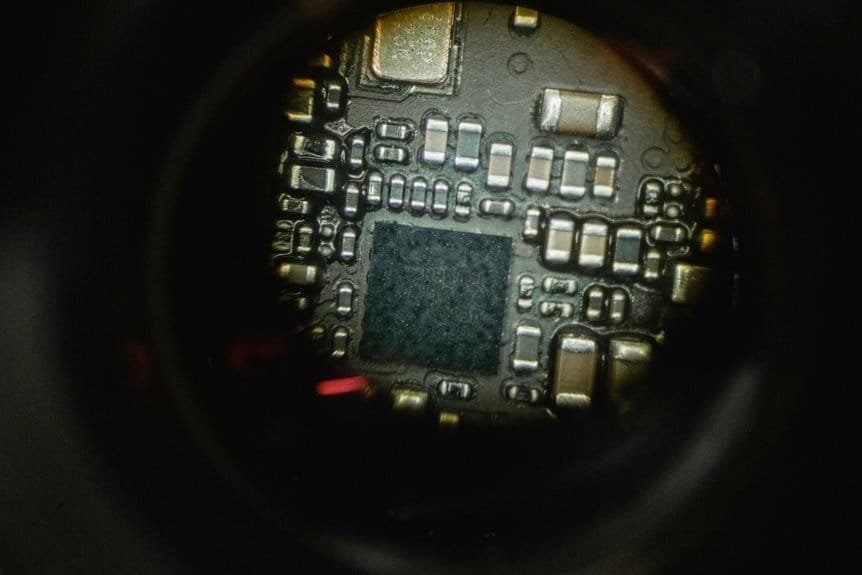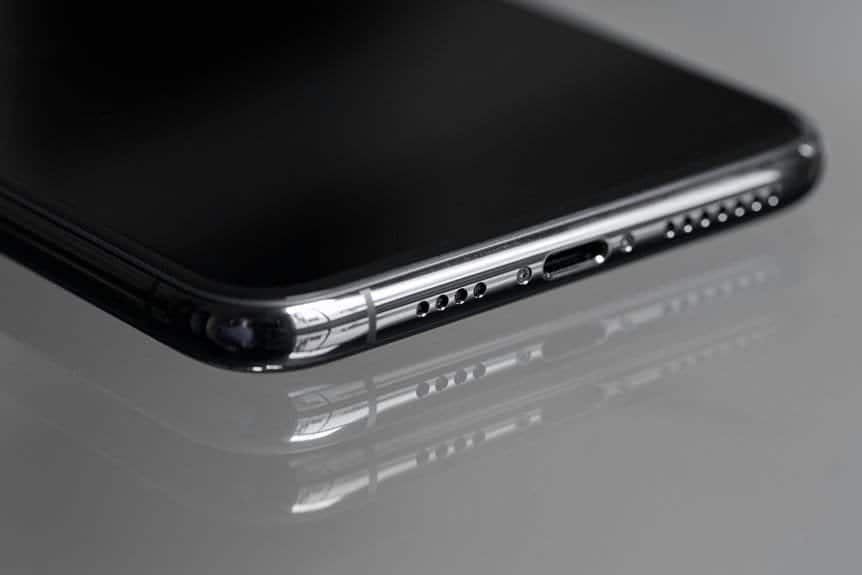5 Common Phone Repair Issues in Underwood and How to Fix Them
December 27, 2024 | by search.wizards.info@gmail.com

A cracked screen is one of the most common issues that smartphone users face. Whether it’s due to a drop, impact, or pressure, a cracked screen can be a major inconvenience and even a safety hazard. Not only does it affect the aesthetics of the phone, but it can also hinder the functionality of the touch screen, making it difficult to use the device. In some cases, a cracked screen can also lead to further damage to the internal components of the phone.
There are a few options for dealing with a cracked screen. One option is to have the screen replaced by a professional technician. This can be costly, but it is often the best way to ensure that the phone is restored to its original condition. Another option is to use a DIY screen repair kit, which can be more affordable but may not always produce the same quality results. In some cases, a screen protector can be used to prevent further damage and make the cracks less noticeable. However, it’s important to keep in mind that a cracked screen can compromise the integrity of the phone and may require professional attention.
A cracked screen can be a frustrating and costly problem for smartphone users. It’s important to take steps to prevent damage, such as using a protective case and being mindful of where the phone is placed. If a cracked screen does occur, it’s important to weigh the options for repair and consider the long-term impact on the phone’s functionality and value.
Battery Drainage
Battery drainage is another common issue that smartphone users encounter. Whether it’s due to heavy usage, background apps, or a faulty battery, rapid battery drainage can be a major inconvenience. It can limit the usability of the phone and require frequent recharging, which can disrupt daily activities and lead to frustration.
There are several potential causes of battery drainage, including software issues, hardware problems, and user behavior. One common culprit is background apps that continue to run and consume power even when not in use. In some cases, a faulty battery or charging port can also contribute to rapid battery drainage. Additionally, heavy usage of power-hungry features such as GPS, video streaming, and gaming can also drain the battery quickly.
To address battery drainage, there are several steps that smartphone users can take. One option is to adjust settings to optimize battery life, such as reducing screen brightness, disabling background apps, and using power-saving modes. Another option is to replace the battery or have it checked by a professional technician. It’s also important to be mindful of usage habits and consider investing in portable chargers or battery packs for on-the-go recharging.
Battery drainage is a common issue that can impact the usability of smartphones. By taking steps to address the causes and optimize battery life, users can minimize inconvenience and ensure that their devices remain functional throughout the day.
Water Damage
Water damage is a serious issue that can occur with smartphones, often resulting from accidental exposure to moisture or liquids. Whether it’s from a spilled drink, a drop in water, or exposure to high humidity, water damage can have significant consequences for the functionality and longevity of a smartphone. It can lead to corrosion of internal components, short-circuiting, and irreversible damage that may require professional attention.
When a smartphone is exposed to water, it’s important to act quickly to minimize damage. The first step is to power off the device and remove any external accessories such as cases or covers. The phone should then be carefully dried with a soft cloth or towel, taking care not to spread moisture further into the device. It’s important not to use heat sources such as hair dryers or ovens, as these can cause further damage.
After drying the phone as much as possible, it’s important to allow it to air dry in a warm, dry environment for at least 24-48 hours. This allows any remaining moisture to evaporate and reduces the risk of corrosion or short-circuiting. In some cases, placing the phone in a container of uncooked rice or silica gel packets can help absorb moisture from the device.
If water damage occurs, it’s important to have the phone checked by a professional technician as soon as possible. Attempting to power on the device or use it before it has been properly dried and inspected can lead to further damage and reduce the chances of successful repair.
Charging Port Issues
Charging port issues are another common problem that smartphone users encounter. Whether it’s due to wear and tear, debris accumulation, or faulty connections, charging port issues can hinder the ability to charge the device and limit its usability. This can be particularly frustrating for users who rely on their smartphones for daily communication, work, and entertainment.
One potential cause of charging port issues is debris accumulation, such as dust, lint, or pocket lint that can accumulate in the port over time. This can obstruct the connection between the charging cable and port, leading to inconsistent charging or difficulty in establishing a connection. In some cases, wear and tear from frequent use can also lead to loose connections or damage to the port itself.
To address charging port issues, there are several steps that smartphone users can take. One option is to carefully clean the charging port using compressed air or a soft brush to remove any debris that may be obstructing the connection. It’s important not to use sharp objects or excessive force, as this can cause further damage to the port. Another option is to use a different charging cable or adapter to determine if the issue lies with the accessories rather than the port itself.
If cleaning and testing different accessories do not resolve the issue, it may be necessary to have the charging port inspected and repaired by a professional technician. This can involve replacing the port or addressing any underlying hardware issues that may be contributing to the problem.
Software Malfunctions
Software malfunctions are another common issue that smartphone users encounter. Whether it’s due to outdated software, incompatible apps, or system errors, software malfunctions can lead to crashes, freezes, and other performance issues that hinder the usability of the device. This can be particularly frustrating for users who rely on their smartphones for work, communication, and entertainment.
One potential cause of software malfunctions is outdated software that has not been updated with the latest security patches and bug fixes. This can lead to compatibility issues with newer apps and services, as well as vulnerabilities that may compromise the security of the device. In some cases, incompatible apps or malware can also lead to system errors and performance issues.
To address software malfunctions, there are several steps that smartphone users can take. One option is to check for software updates and install any available updates for the operating system and apps. This can help address compatibility issues and security vulnerabilities while improving overall performance. Another option is to uninstall any recently installed apps or updates that may be causing conflicts with the system.
If software malfunctions persist despite updating software and removing incompatible apps, it may be necessary to perform a factory reset or have the device inspected by a professional technician. This can help identify any underlying hardware issues or system errors that may be contributing to performance issues.
Speaker or Microphone Problems
Speaker or microphone problems are another common issue that smartphone users encounter. Whether it’s due to physical damage, software issues, or hardware malfunctions, problems with speakers or microphones can hinder communication and limit the usability of the device. This can be particularly frustrating for users who rely on their smartphones for calls, video chats, and multimedia playback.
One potential cause of speaker or microphone problems is physical damage from drops, impacts, or exposure to moisture. This can lead to issues such as distorted sound, muffled audio, or complete loss of functionality. In some cases, software updates or settings changes can also lead to issues with speakers or microphones.
To address speaker or microphone problems, there are several steps that smartphone users can take. One option is to check for software updates and install any available updates for the operating system and apps that may be affecting audio functionality. Another option is to adjust settings related to audio input and output, such as volume levels and microphone sensitivity.
If speaker or microphone problems persist despite updating software and adjusting settings, it may be necessary to have the device inspected by a professional technician. This can involve repairing or replacing damaged components as well as addressing any underlying hardware or software issues that may be contributing to audio problems.
Overheating
Overheating is another common issue that smartphone users encounter, particularly with devices that are used for heavy multitasking or resource-intensive activities such as gaming and video streaming. Overheating can lead to performance issues, reduced battery life, and potential damage to internal components if not addressed promptly.
One potential cause of overheating is heavy usage of power-hungry features such as GPS navigation, video streaming, gaming, and multitasking with multiple apps running simultaneously. This can lead to increased heat generation within the device and hinder its ability to dissipate heat effectively. In some cases, background apps or software bugs may also contribute to overheating by consuming excessive resources.
To address overheating issues, there are several steps that smartphone users can take. One option is to reduce usage of power-hungry features and close background apps that may be consuming excessive resources. Another option is to enable power-saving modes or adjust settings related to display brightness and performance profiles.
If overheating persists despite adjusting usage habits and settings, it may be necessary to have the device inspected by a professional technician. This can involve addressing any underlying hardware issues such as faulty cooling systems or damaged components that may be contributing to overheating.
In conclusion, smartphones are essential tools for communication, productivity, and entertainment in today’s digital age. However, they are also prone to various issues that can hinder their functionality and longevity. By being mindful of potential problems such as cracked screens, battery drainage, water damage, charging port issues, software malfunctions, speaker or microphone problems, and overheating, smartphone users can take steps to prevent damage and address issues promptly when they arise. Whether it’s through careful usage habits, regular maintenance, or professional repairs when necessary, proactive measures can help ensure that smartphones remain reliable and functional tools for daily use.
RELATED POSTS
View all



 Choose repair by clicking (book now)
Choose repair by clicking (book now)